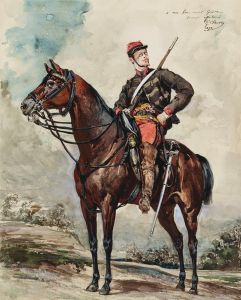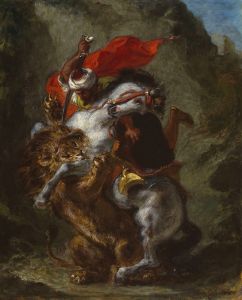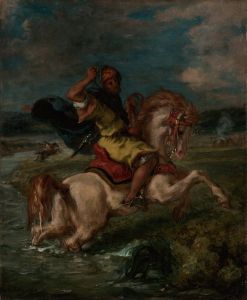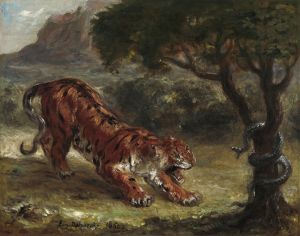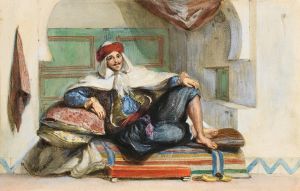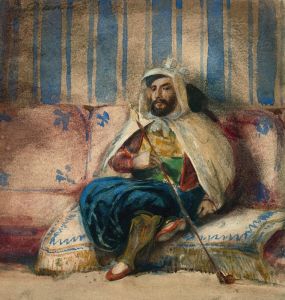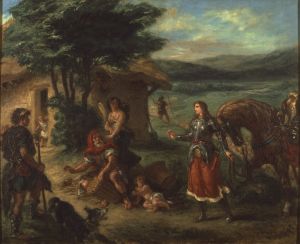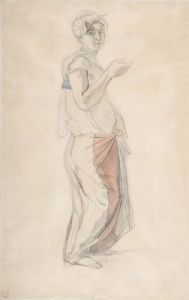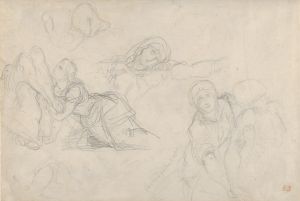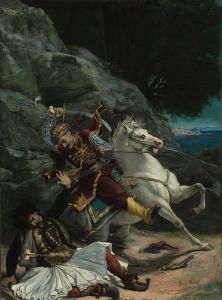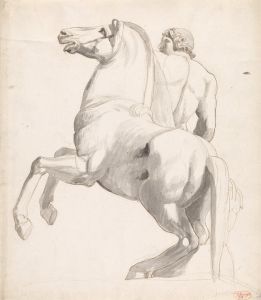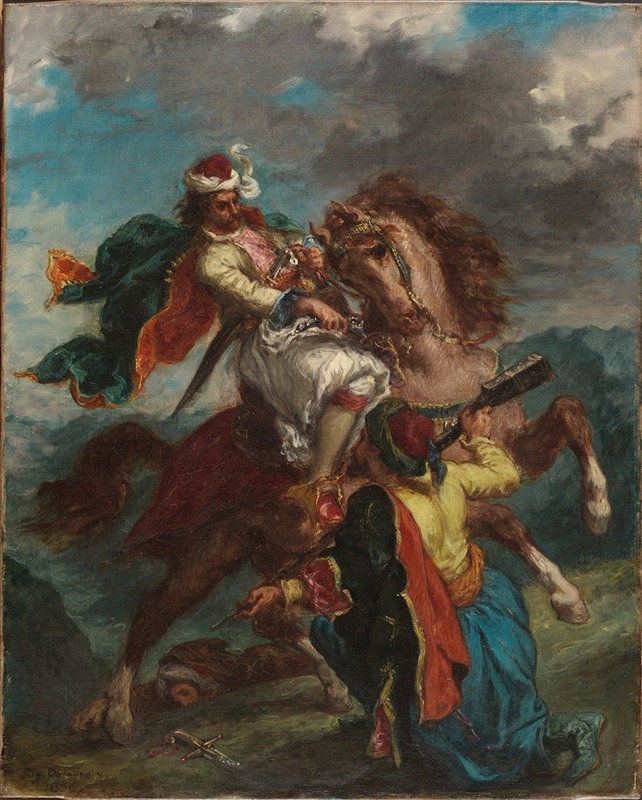
A Turk Surrenders to a Greek Horseman
A hand-painted replica of Eugène Delacroix’s masterpiece A Turk Surrenders to a Greek Horseman, meticulously crafted by professional artists to capture the true essence of the original. Each piece is created with museum-quality canvas and rare mineral pigments, carefully painted by experienced artists with delicate brushstrokes and rich, layered colors to perfectly recreate the texture of the original artwork. Unlike machine-printed reproductions, this hand-painted version brings the painting to life, infused with the artist’s emotions and skill in every stroke. Whether for personal collection or home decoration, it instantly elevates the artistic atmosphere of any space.
A Turk Surrenders to a Greek Horseman is a painting by the French Romantic artist Eugène Delacroix, created in 1824. The work is an oil on canvas and is currently housed in the Musée Fabre in Montpellier, France. It is one of Delacroix's early masterpieces and reflects his interest in historical and contemporary events, as well as his fascination with the exotic and dramatic themes that were central to the Romantic movement.
The painting depicts a dramatic moment during the Greek War of Independence (1821–1829), a conflict in which Greece fought to gain independence from the Ottoman Empire. The scene shows a Turkish soldier surrendering to a Greek horseman, symbolizing the struggle between the two sides. The composition is dynamic, with the figures arranged in a way that emphasizes the tension and emotional intensity of the moment. The Greek horseman, mounted on a rearing horse, dominates the scene, while the Turkish soldier kneels in submission, his posture conveying defeat and vulnerability.
Delacroix was deeply inspired by the Greek War of Independence, which captured the imagination of many European artists and intellectuals at the time. The conflict was widely seen as a struggle for freedom and a revival of classical ideals, and it resonated with the Romantic emphasis on heroism and individual expression. Delacroix's interest in the subject was also influenced by the philhellenic movement, which supported the Greek cause and celebrated the cultural heritage of ancient Greece.
The painting is notable for its vivid use of color and dramatic contrasts of light and shadow, hallmarks of Delacroix's style. The artist's loose, expressive brushwork adds to the sense of movement and energy in the scene. The detailed rendering of the figures and their costumes reflects Delacroix's fascination with the exotic, a theme that recurs throughout his work.
While the painting is rooted in a specific historical context, it is not a literal depiction of an actual event. Instead, it serves as a symbolic representation of the broader conflict and the themes of struggle, heroism, and cultural identity. Delacroix's ability to convey these themes through his art helped establish his reputation as one of the leading figures of the Romantic movement.
A Turk Surrenders to a Greek Horseman was exhibited at the Paris Salon of 1824, where it received critical acclaim. The painting marked an important step in Delacroix's career, showcasing his ability to combine historical subject matter with a highly personal and emotive artistic style. It remains an important example of Romantic art and a testament to Delacroix's skill as a painter.







